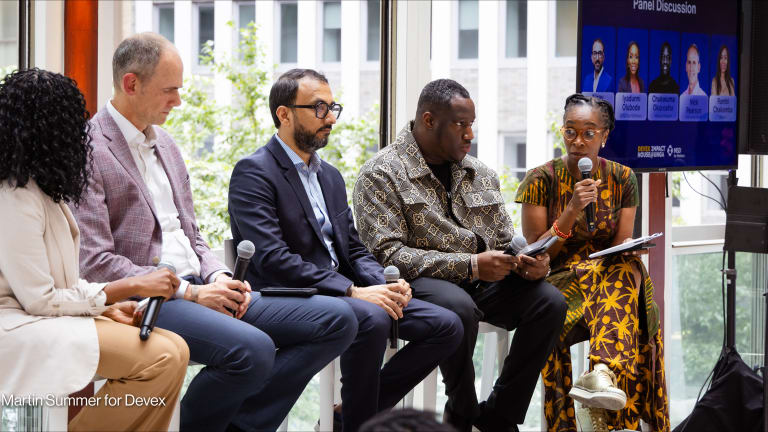
I will never forget a man I met two years ago in Liberia. Louis was the father of five children and earned his living as a motorcycle-taxi driver when he got into an accident and broke his leg. The bone penetrated the skin. But the basic orthopedic care Louis needed to set the fracture was more than two days away on a terrible road. Knowing that no local care was available, Louis delayed.
Several days after the accident, when I saw Louis, he had developed a severe infection — gangrene and bacteria in his bloodstream. After our brief meeting, he died of a broken leg.
Louis was one man among far too many people I’ve met who die from basic ailments that could have been addressed in a functioning health care system. A global commitment is needed to build robust health systems that can guarantee the right to health, whether a person has HIV, complications of pregnancy, or a broken leg. Health is a human right that must be made accessible to everyone, regardless of where they are born.
“Universal health coverage is an idea with clear benefits, where expense is nothing compared to the cost of continued procrastination.”
— Joia Mukherjee, chief medical officer at Partners In HealthThankfully, I am not alone in this belief. Forty years ago, the first Global Conference on Primary Health Care was held in Almaty, Kazakhstan. That conference declared the goal of “health for all by the year 2000,” although this lofty target was not met with commensurate funding and soon fell victim to the politics of the Cold War. Last month, my global health colleagues and a distinguished group of world leaders gathered again for the Global Conference on Primary Health Care in Astana, Kazakhstan. On October 26, country representatives signed and ratified a declaration to increase investments in primary health care, with the ultimate goal of achieving universal health coverage for all by 2030.
We have high hopes that this declaration, this time, will be met with action. Many things have changed since 1978. The Cold War is over, globalization has changed movement of people and resources, and the global movement for AIDS treatment access has been successful in helping governments and communities treat millions of people around the world. Recent decades have proven that universal health coverage is no longer an ideal, but an attainable goal. The right to health is now written into national constitutions, and governments, from Norway to Rwanda, are committing more of their internal resources to finance the public provision of care.
We know what we are aiming for. As established under the U.N. Sustainable Development Goals, health care for all relies upon two major tenets: universal access to quality care and affordability.
We also have a road map. First, countries must define their burdens of disease. How many people will contract malaria or develop tuberculosis in a given time and space, for example? Next, they must determine how much it will cost to provide quality health care given these scenarios. What staff, supplies, and space will be needed? And finally, they must find, leverage, or redirect both public money and donor money to cover the cost.
Why redirect? Because there is money to do this hard, yet essential, work. The tired refrain that “there’s no money” for universal health coverage is a fallacy. Countries such as Thailand, Costa Rica, and Nepal are proving as much. The cash just needs to flow in the right direction — through national governments, in support of their public health systems.
Global financing bodies, nongovernmental organizations, and private investors have historically preferred to funnel funds through private or nonprofit institutions. This may be effective over the short term, but it ignores the larger issue — that the entire country lacks trained clinical and administrative staff, adequate facilities and supplies, and an organized system of care. Supporting ministries of health, on the other hand, puts money directly in the hands of governments so that a country’s leaders determine the appropriate allocation of funds across an entire system of care.
There are case studies that support this approach. Indeed, as chief medical officer of Partners In Health, I have been a part of them. Partners In Health-supported public clinics have reached universal health coverage in small but challenging subsets of the population, such as patients living with HIV in parts of Haiti, Malawi, and Lesotho. We accomplished this by partnering directly with governments, so that funding funneled directly through the public health care system to where it was needed most.
If we can do this today in some of the poorest nations in the world, we can definitely make sure a father of five doesn’t have to die of a broken leg. Universal health coverage is an idea with clear benefits, where expense is nothing compared to the cost of continued procrastination.








